Clock Speeds
The charts below show the average GPU clock speeds in various usage scenarios.
Overclocking
I dialed up to 2770 MHz for the GPU’s clock, and 1562.5 MHz for the VRAM, and everything was working fine. The overclocking room is significant, especially for VRAM.
GPU & RAM Clocks
Operating Temperatures
Power Consumption
The power consumption didn’t change; it actually dropped a bit because you cannot increase the power limit! It looks weird, I know, higher performance with slightly less power consumption, but it is what it is!
Overclock Gain
A close to 9% performance gain through overclocking, and without affecting power consumption, is a great feature!
Pages:
- Prologue & Technical specifications
- NVIDIA’s Key Technologies
- Box & Contents
- Part Analysis
- Specifications Comparison
- Test System
- Game Benchmark Details
- Raster Performance
- RT Performance
- RT Performance + DLSS/FSR Balanced
- Raytracing Performance + DLSS/FSR Balanced + FG
- DLSS/FSR Balanced (No RT)
- DLSS/FSR Balanced + FG (No RT)
- Relative Perf & Perf Per Watt (Raster)
- Relative Perf & Perf Per Watt (Raster + DLSS/FSR)
- Relative Perf & Perf Per Watt (RT)
- Relative Perf & Perf Per Watt (RT + DLSS/FSR)
- Relative Perf & Perf Per Watt (RT + DLSS/FSR + FG)
- Rendering Performance
- Operating Temperatures
- Operating Noise & Frequency Analysis
- Power Consumption
- Clock Speeds & Overclocking
- Cooling Performance
- Epilogue
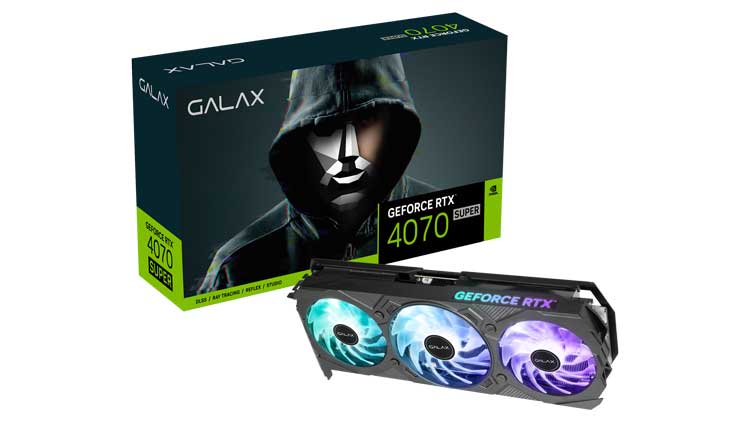
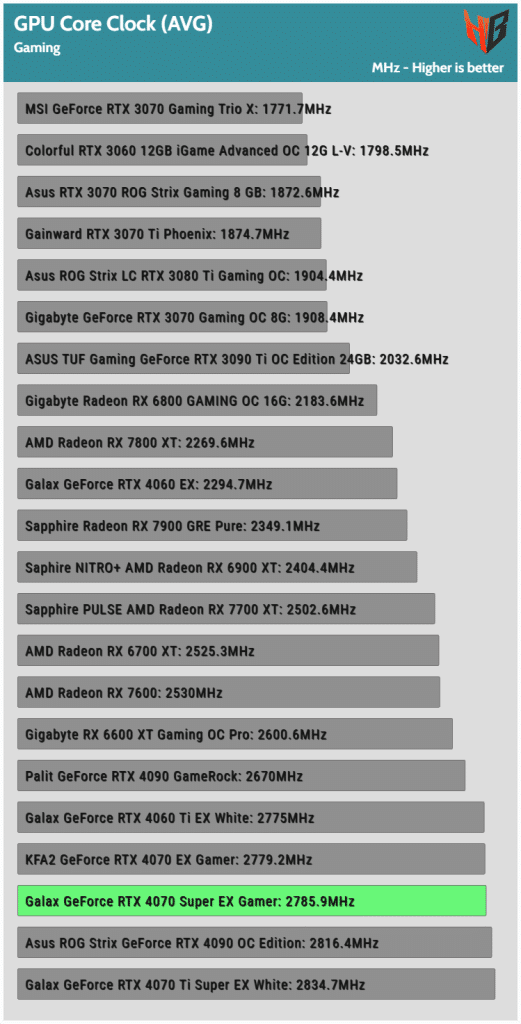
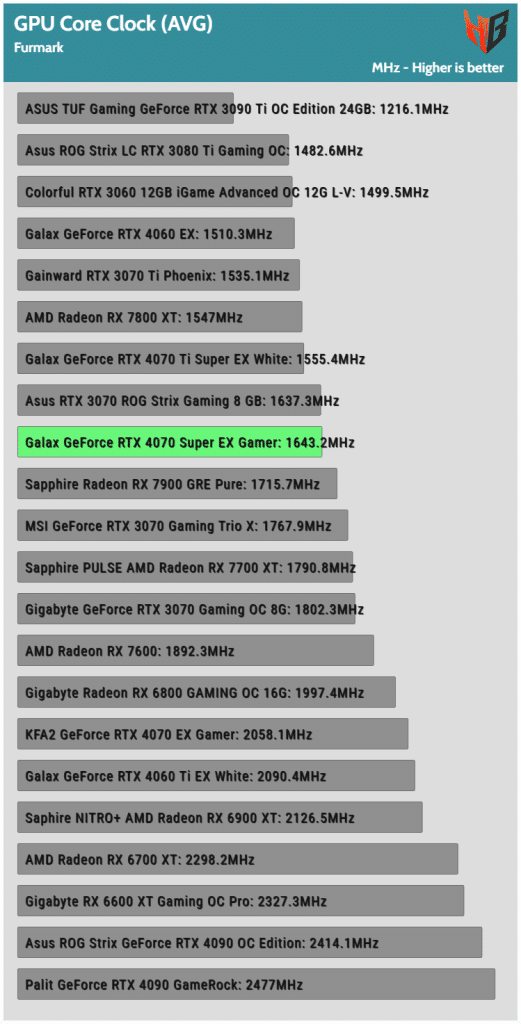

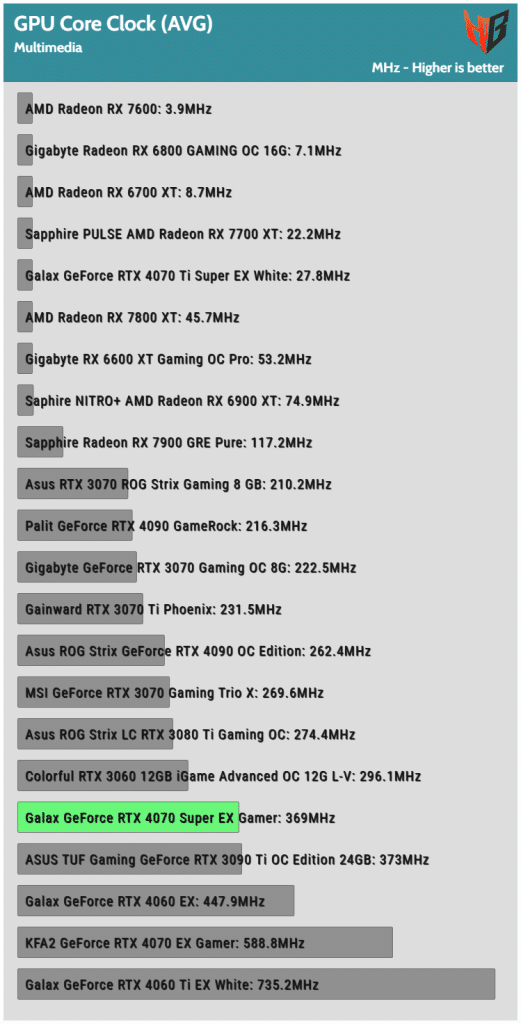




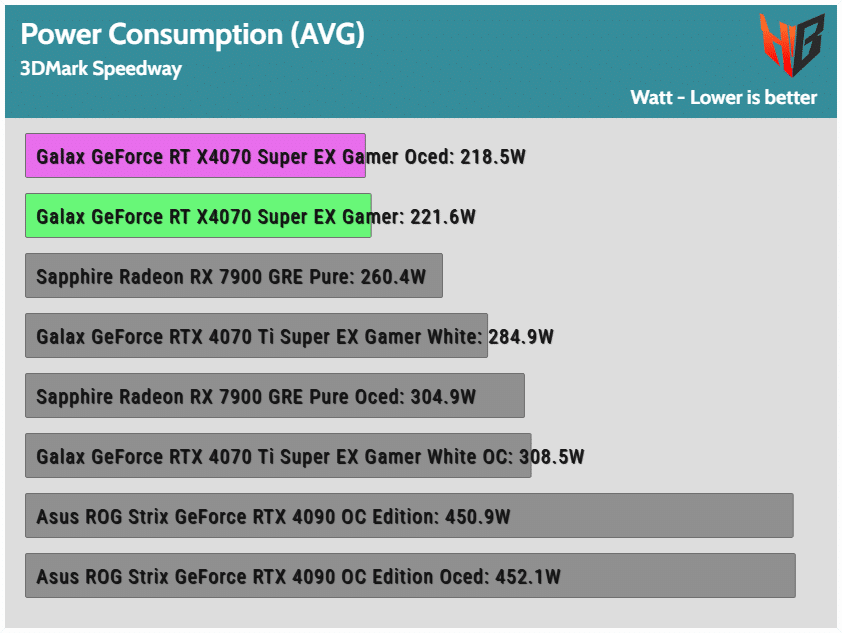


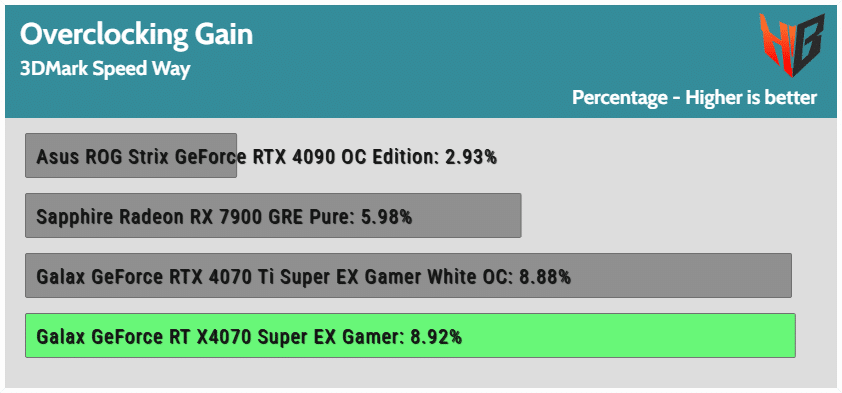
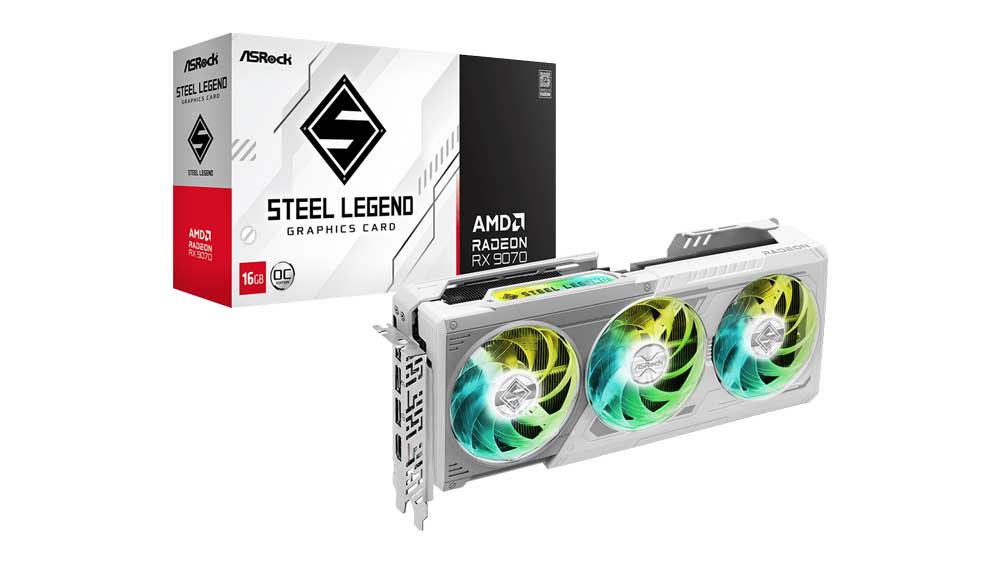

Since it looks like the 40 super series uses the new 12v-2×6 headers, does this mean that ATX 3.0 psus using 12vhpwr won’t have that burning issue? Thanks for all you do.
Nope, there won’t be a problem with ATX v3.0 PSUs because the cable remains exactly the same, and on the PSU side, there weren’t any notable issues.
Thank you for the reply! I’ve been unnecessarily stressed because I got a 4080 super FE and was worried about fire thing as this is my first pc build.